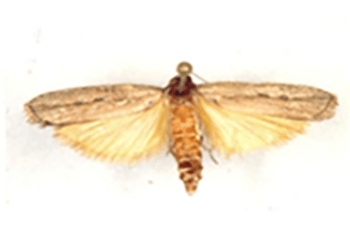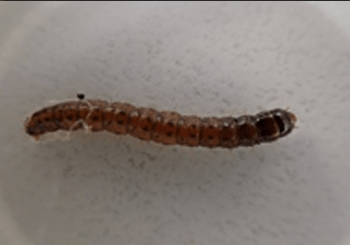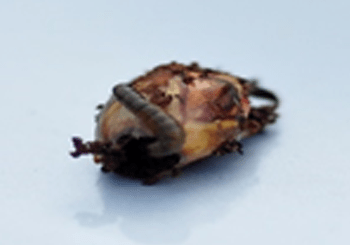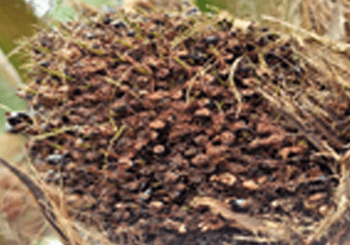Ecology
The life cycle consists of five larval stages, where each stage is differentiated by size and body length. The adult wingspan size is about 26-30 mm. Their hindwings colour is plain pale yellow or orange-yellow. The larvae are the destructive stage, damaging the inflorescences and the developing fruitlets of young bunches.


Causal
Conducive areas of growth: Areas with unharvested ripe bunches and have limited natural enemies.
Symptoms
Infestation is characterised by the presence of a long tube of silk and frass in the bunch, which are reddish when fresh and brownish-black when old. On developing bunches, the larvae feed and scrap on the fruitlets and later boring holes in the mesocarp up to the kernel, creating hollow-centred oil palm fruit.


Control
Biological control
The applications of microbe-based biopesticides (Bacillus thuringiensis, Metarhizium spp. Beauveria bassiana) are recommended in controlling the larval population of Tirathaba. It is proven to be as effective as chemical insecticides and also poses minimal risks to non-target organisms. The application of endoparasitic nematodes, predators, parasitoids is a potential control method of the pest.
Chemical control
Application of the following chemical insecticides was proven to be able to control the larval population of Tirathaba. However, careful application of broad-spectrum insecticides such as Fipronil and cypermethrin is essential to preserve the population of the non-target insects in the field (e.g.: pollinators and predators/ parasitoids).
- Chlorantraniliprole
- Flubendiamide
- Fipronil
- Cypermethrin
